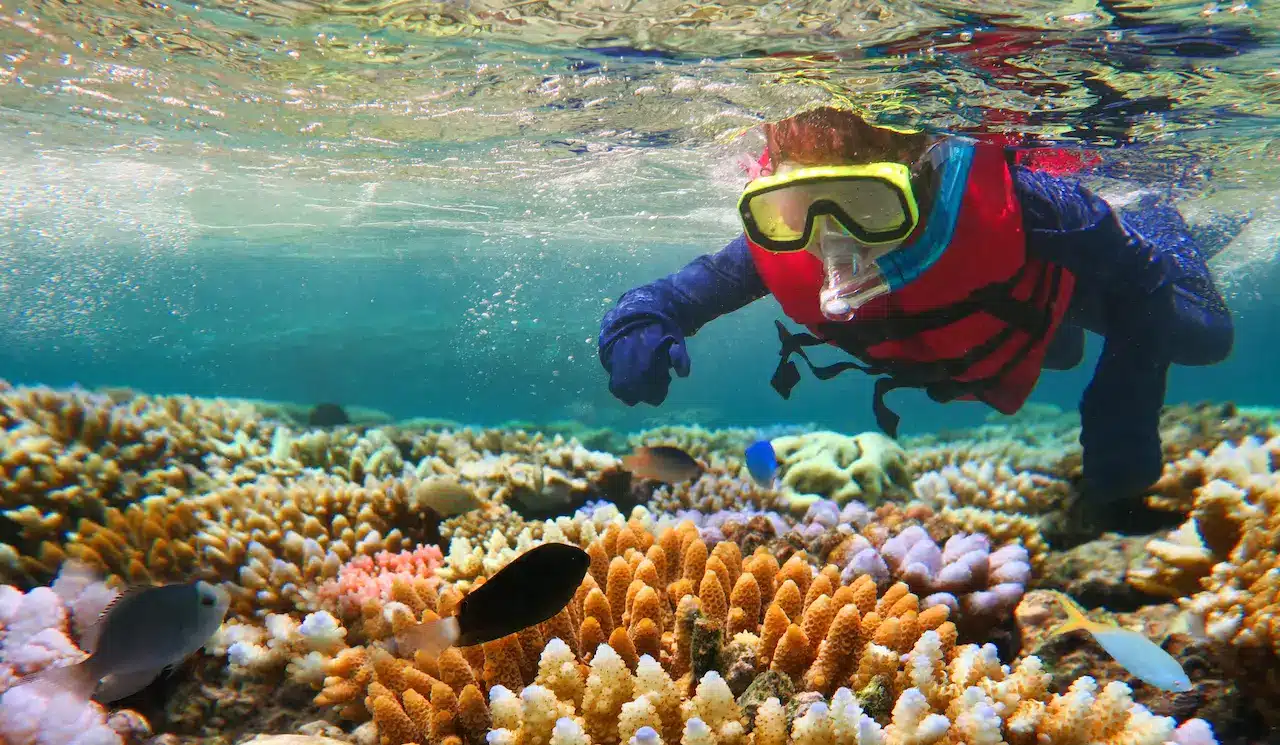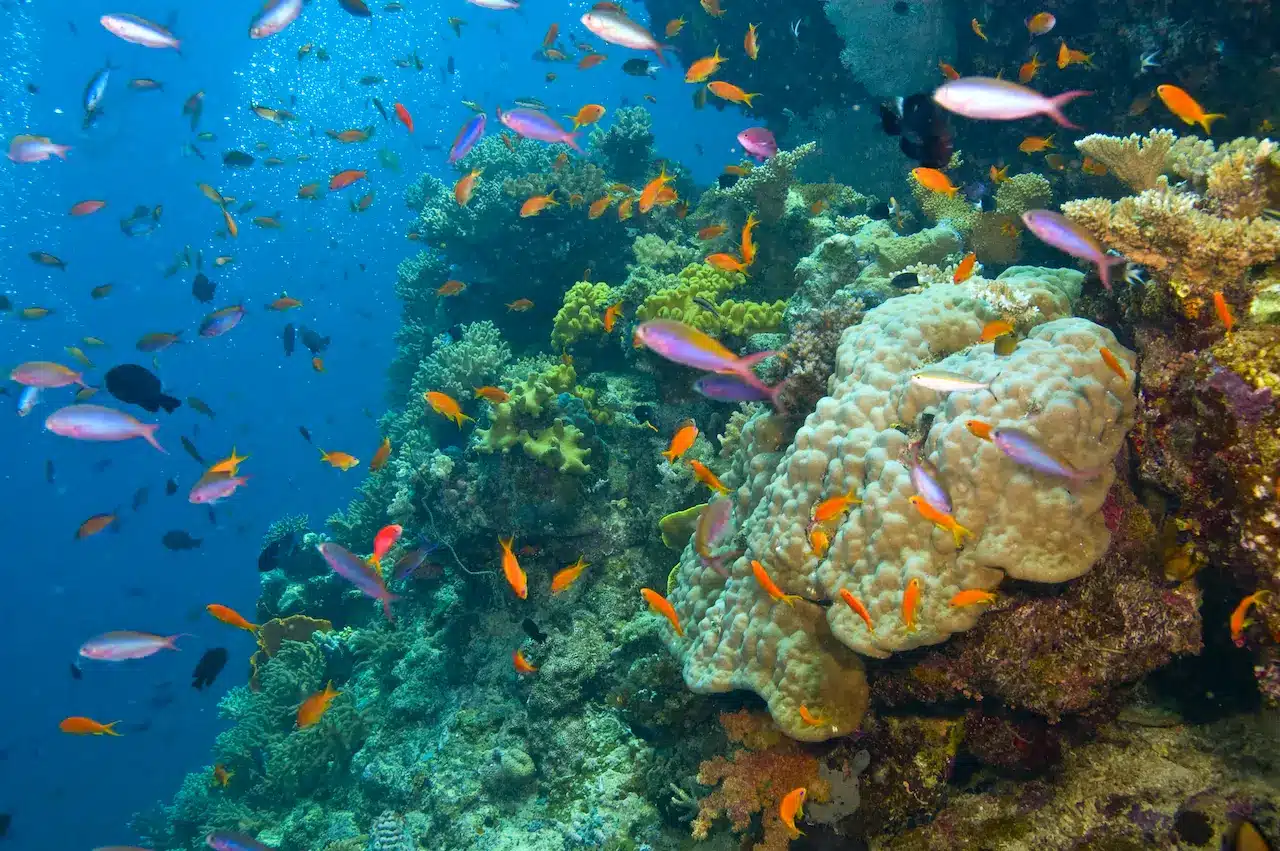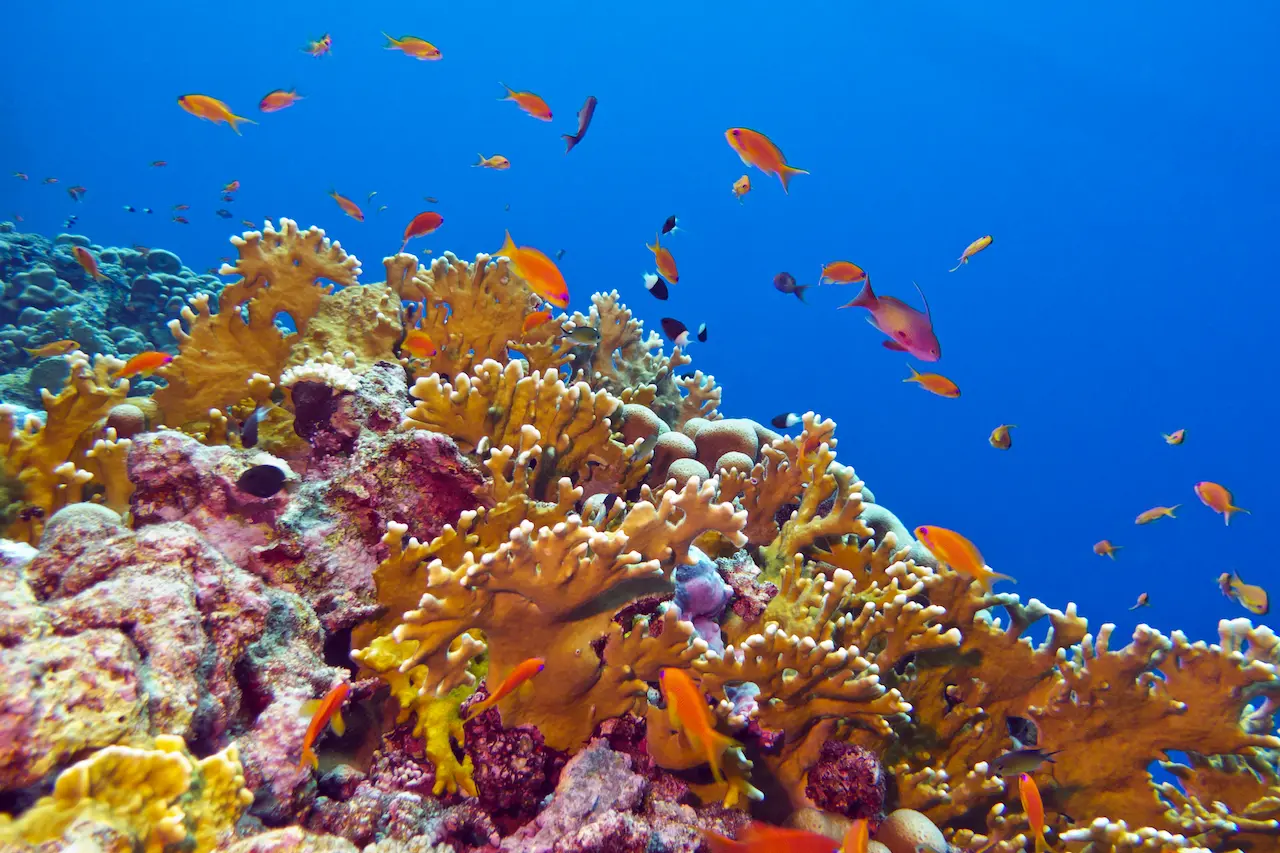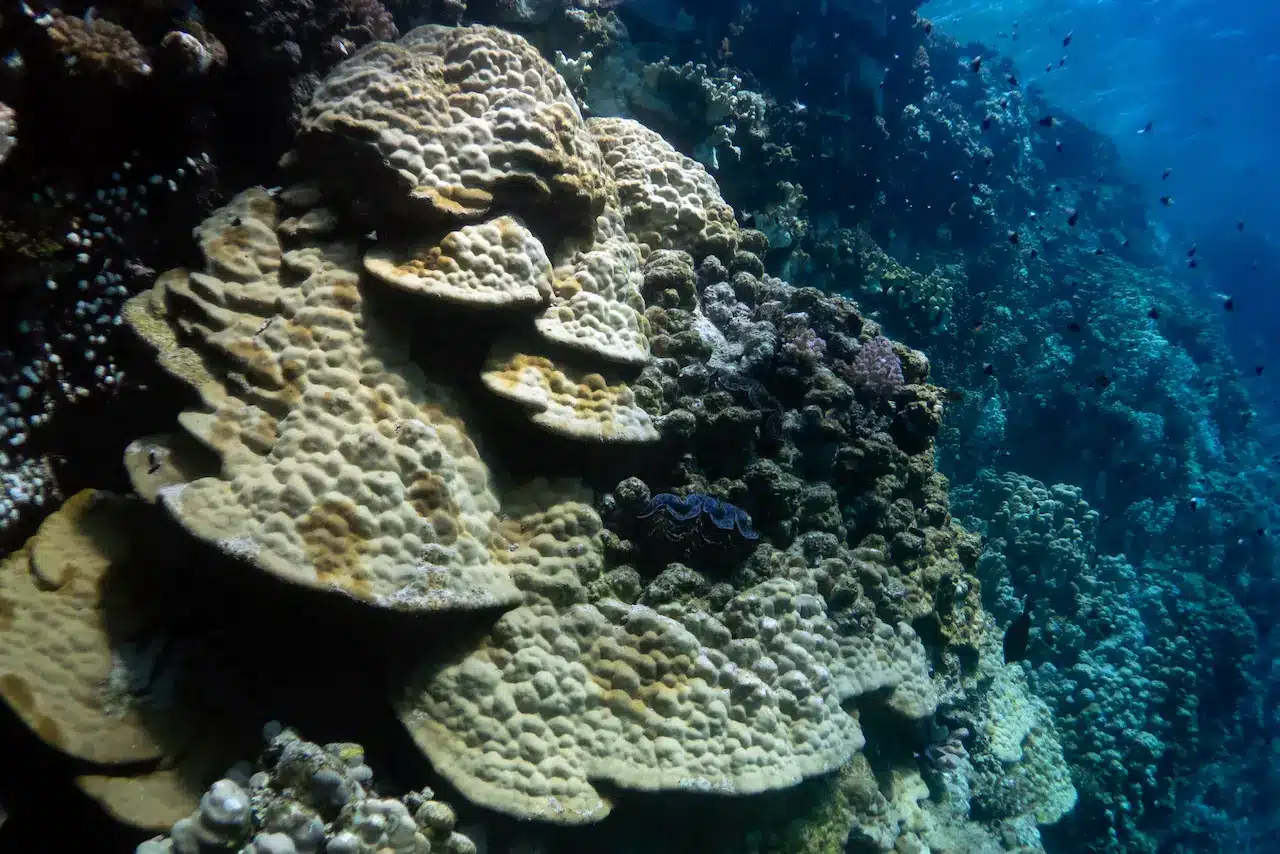Top 10 Coral Reefs in the World: Biodiversity, Beauty, and Conservation
Discover the breathtaking beauty and ecological importance of the world’s top 10 coral reefs. From the Great Barrier Reef to hidden underwater gems, this list highlights some of the most stunning and biologically diverse ecosystems on the planet. Alongside their natural wonders, we also explore the urgent environmental challenges these reefs are facing today, including climate change, pollution, and overfishing, and what’s being done to protect them for future generations.
Table of Contents
ToggleRead our list of the top 10 coral reefs in the world and the current challenges they face.
Great Barrier Reef, Australia
The Great Barrier Reef is an enormous coral reef system off Queensland in Australia. It has more than 2,300km in length and houses over 1,500 species.
Current Health
As a result of climate change and water pollution, the Great Barrier Reef has seen significant bleaching. However, there are efforts being made to restore and protect the reef.
Environmental Challenges
The Great Barrier Reef is at risk from climate change, overfishing, and water pollution.
History
The Great Barrier Reef is a natural wonder. It was designated a World Heritage Site in 1981.
Marine Life
The Great Barrier Reef hosts a remarkable array of marine life. Over 1,500 fish species, including the clownfish and the impressive humphead wrasse, coexist with 400 types of coral. The reef is also home to endangered species like the green sea turtle and dugong, as well as various sharks, rays, and molluscs.

Wally The Wrasse
The reef is also home to the most famous fish in the Great Barrier Reef, Wally the wrasse. Wally can be seen below swimming with divers.
Is Wally Maori Wrasse still alive?
The Maori Wrasse, known also as the humphead wrasse or more fondly as ‘Wally,’ is the wrasse family’s largest living member.
What kind of fish is Wally?
Wally is a Maori wrasse.
What is the largest wrasse?
The humphead wrasse is one of the biggest on the coral reef. These fish grow over six feet long with a prominent bulge on its forehead. These fish can live to be over 30 years old. They roam through coral reefs in search of hard-shelled prey such as molluscs, starfish, or crustaceans.
Raja Ampat, Indonesia
Raja Ampat is located in Indonesia’s West Papua Province. It is well-known for its amazing biodiversity and healthy coral reefs.
Current health – Raja Ampat is in good health. Conservation efforts are being made to preserve its unique ecosystem.
Environment Challenges
History: Raja Ampat is a place that has been inhabited for thousands of years.
Marine life: Raja Ampat, an Indonesian archipelago, boasts incredible marine biodiversity, with over 1,400 fish species and 550 coral types. This vibrant ecosystem is home to iconic manta rays, elusive wobbegong sharks, and diminutive pygmy seahorses. Its pristine coral reefs attract an abundance of marine life, including numerous endemic species, making Raja Ampat a premier diving destination and a critical area for conservation.
Palau, Micronesia
Palau, an archipelago located in Micronesia, is the main tourist attraction.
Current health: Palau’s coral reefs are in great condition thanks to strict conservation measures.
Environmental Challenges: Palau’s Reefs continue to be threatened by climate change, ocean acidification and other factors.
Marine Life: Palau has over 1,300 fish species and 700 coral species. These include the rare dugong, the endemic nautilus, and the rare dugong.
Belize Barrier Reef, Belize
The second-largest coral network is Belize Barrier Reef. It is a UNESCO World Heritage Site. It is home to an amazing array of marine life and covers more than 260km.
Environmental Challenges: Overfishing, coastal development and climate change are the main threats to Belize Barrier Reef ecosystem.
History: The region’s history has been influenced by the reef. Their resources were essential to the ancient Mayan civilizations.
Marine Life: More than 500 species live in the reef, including the endangered West Indian Manatee and the whale shark.
Red Sea Coral Reef. Egypt and Sudan
Red Sea Coral Reef is located between Egypt and Sudan and is an extraordinary ecosystem.
Current Health: The Red Sea Coral Reef is a good health. Some areas are affected by pollution and bleaching.
Environmental Challenges: Climate change, pollution, and coastal development are the main threats to the Red Sea Coral Reef’s Reef.
History: The Red Sea was an important trading route for thousands of years. Ancient civilisations like the Romans and Egyptians used it as a major trade route.
Marine Life: More than 1200 species live on the reef, including the charismatic Hawksbill Turtle and endangered Napoleon Wrasse.
Maldives Coral Reef
The coral reefs of the Maldives, an Indian Ocean island nation, are well-known. The Maldives is home to over 2,000 species of coral and 200 other species.
Current health: While some coral reefs have been affected by bleaching events in the Maldives, conservation efforts continue to save and rebuild them.
Environmental Problems: The Maldives’ coral reefs are under threat from climate change and overfishing.
History: The rich history of the Maldives goes back more than 2,000 years. It also includes influences from Arab and Asian cultures.
The Maldives has a wide range of marine life, including endangered manta Rays, green turtles, and whale sharks.
Tubbataha Reef, Philippines
Tubbataha Reef is a UNESCO World Heritage Site in the Philippines.
Current health: Tubbataha Reef’s condition is excellent, and strict conservation measures have been taken.
Environmental Problems: Tubbataha Reef is constantly concerned about climate change, illegal fishing, and pollution.
History: Tubbataha Reef is a sacred place for local Indigenous peoples for many years. In 1988, it was designated a marine protected zone.
Marine Life: Tubbataha Reef, a UNESCO World Heritage site in the Philippines, features a coral ecosystem teeming with marine life. Home to over 600 fish species and 360 coral varieties, the reef hosts an array of marine creatures, including endangered hawksbill turtles and the strange-looking hammerhead sharks. Tubbataha Reef’s diverse marine life makes it a much sought-after diving destination.

Barrier Reef of New Caledonia
The New Caledonia Barrier Reef is a UNESCO World Heritage Site and the third-largest coral Reef system on the planet.
Current health: The New Caledonia Barrier Reef is in good health, and conservation efforts are ongoing.
Environmental Problems: Coral reef health is at risk from climate change, overfishing and coastal development.
History: New Caledonia is home to a unique cultural heritage. The native Kanak people have lived on the islands for more than 3,000 years.
Marine Life: More than 2,000 species live in the reef, including endangered dugongs.
Ningaloo Reef, Western Australia
Ningaloo Reef is located off the coast of Western Australia. It is well-known for its whale Shark migrations, abundant marine life, and other remarkable natural phenomena.
Current health: Ningaloo Reef’s health is good and conservation efforts have been made.
Ningaloo Reef is most at risk from climate change and coastal development.
History: Ningaloo Reef is rich in cultural history. There are thousands of years of evidence of Indigenous Australian presence.
Marine Life: The Ningaloo Reef is home to a diverse array of marine life, including whale sharks, manta rays, humpback whales, and over 500 species of fish.
Mexico, Belize are all part of the Mesoamerican Reef
The largest coral reef system in the Atlantic Ocean is the Mesoamerican Reef. It stretches along the coasts of Mexico, Belize and Guatemala. It is home to a variety of marine species as well as unique underwater landscapes.
Current Health: Although the Mesoamerican Reef has suffered some coral bleaching and damage due to its reef, conservation efforts are ongoing to restore and protect its health.
Environmental Challenges: The main threats to the Mesoamerican reef are climate change, coastal development and overfishing.
History: The Mesoamerican reef has been a key part of the history and culture in the region. Ancient Mayan and Aztec civilisations relied on their resources.
Marine Life: More than 500 species of fish are found in the Mesoamerican reef, including the endangered manatee and the whale shark.
The world’s biggest coral reefs are under threat from various environmental challenges, but ongoing conservation efforts aim to protect and preserve these ecosystems. By understanding the importance of these reefs and their role in marine biodiversity, we can work towards a sustainable future for these underwater treasures. The world needs to work together to stop pollution, mining companies damaging the waters and stopping the rising temperatures of their waters.


